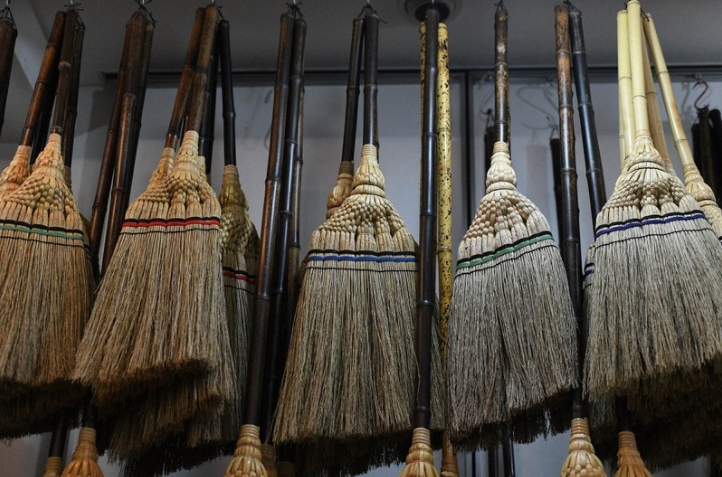
© Shirokiya Denbe in Tokyo’s Chuo Ward via The Mainichi
Pre-reading questions:
I will read each question. Then, please answer them.
- How often do you clean your house?
- Does your family have a tradition every Christmas? Please tell me more about it.
Vocabulary:
I will read the words, meanings, and sample sentences. Then, repeat after me.
- in honor of /IN AA-nr UHV/
- complement /KOM-pluh-ment/
- framework /FREYM-wurk/
- dispose of (something) /dih-SPOHZ uhv/
- explore /ik-SPLAWR/
[idiom] – as a celebration of or expression of respect for
The statue in Sendai was built in honor of Masamune Date.
[verb] – to make something else seem better or more attractive when combining with it
The new wallpaper design complements the sofa sets.
[noun] – a structure around or over which something is built
Does the bridge over the river have a steel framework?
[phrasal verb] – to get rid of something; throw out or destroy
Please dispose of the old books.
[verb] – to try to discover; learn about
The management is exploring new ways to keep the employees motivated.
Article reading:
Please read the whole article. Then, I will check your pronunciation and intonation.
The year will approach its end in less than a month. This is the perfect time for the Japanese to start osouji, the practice of deep cleaning in honor of the Shinto God of the New Year Toshigami.
Traditional brooms made from kochia or the bark of a helm palm for bristles were commonly used in Japanese homes. They complement soft rush plant tatami flooring, as regular use brought out the natural shine on the mat’s surface. And every broom, of course, is accompanied by a dustpan. Harimi are traditional Japanese dustpans created from washi paper stretched across a framework made of bamboo strips. They’re sealed with kakishibu dye, a water-resistant and bug-repellant dye created from persimmon tannin. Unlike plastic or metal, harimi does not cause static electricity, so accumulated dust is disposed ofneatly. For the Japanese, however, the highlight of “sweeping” has a more symbolic meaning. Brooms act as talismans to ward off evil spirits, illness, and danger. On December 13, many temples and shrines across Japan hold a cleaning ceremony to remove physical and mental impurities that have piled up over the year.
There may be unsuspecting traces from the past as we all explore new lifestyles nowadays. Technology evolves and changes all the time, but tradition never does. It’s deeply rooted in our culture, and no amount of cleaning will be able to “sweep” it away.
Traditional brooms made from kochia or the bark of a helm palm for bristles were commonly used in Japanese homes. They complement soft rush plant tatami flooring, as regular use brought out the natural shine on the mat’s surface. And every broom, of course, is accompanied by a dustpan. Harimi are traditional Japanese dustpans created from washi paper stretched across a framework made of bamboo strips. They’re sealed with kakishibu dye, a water-resistant and bug-repellant dye created from persimmon tannin. Unlike plastic or metal, harimi does not cause static electricity, so accumulated dust is disposed ofneatly. For the Japanese, however, the highlight of “sweeping” has a more symbolic meaning. Brooms act as talismans to ward off evil spirits, illness, and danger. On December 13, many temples and shrines across Japan hold a cleaning ceremony to remove physical and mental impurities that have piled up over the year.
There may be unsuspecting traces from the past as we all explore new lifestyles nowadays. Technology evolves and changes all the time, but tradition never does. It’s deeply rooted in our culture, and no amount of cleaning will be able to “sweep” it away.
Comprehension questions
I will read each question. Then, please answer them based on the article.
- What is osouji?
- What do traditional Japanese brooms complement?
- What are harimi sealed with?
- According to the article, what do brooms symbolically serve as?
- What do many temples and shrines do on December 13?
Discussion questions
I will read each question. Then, please answer them.
- Do you practice osouji? Please tell me more about it.
- What do you do in preparation for the New Year?
- Will you use a traditional broom and dustpan to welcome 2022? Why or why not?
- Do you think many Japanese still practice the deep cleaning tradition?
- Why is deep cleaning an important part of Japanese culture?